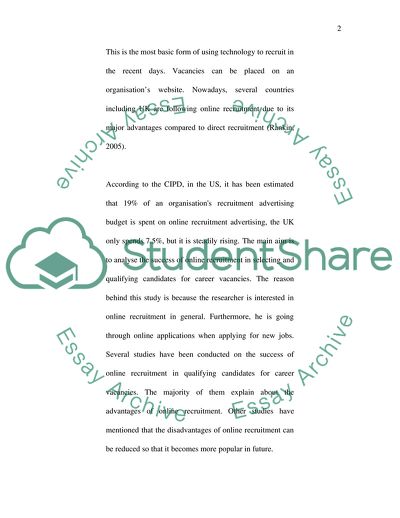Cite this document
(Online Recruitment in Selecting and Qualifying Candidates for Career V Research Paper, n.d.)
Online Recruitment in Selecting and Qualifying Candidates for Career V Research Paper. Retrieved from https://studentshare.org/human-resources/1711645-the-analysis-of-the-success-of-online-recruitment-in-selecting-and-qualifying-candidates-for-career-vacancies
Online Recruitment in Selecting and Qualifying Candidates for Career V Research Paper. Retrieved from https://studentshare.org/human-resources/1711645-the-analysis-of-the-success-of-online-recruitment-in-selecting-and-qualifying-candidates-for-career-vacancies
(Online Recruitment in Selecting and Qualifying Candidates for Career V Research Paper)
Online Recruitment in Selecting and Qualifying Candidates for Career V Research Paper. https://studentshare.org/human-resources/1711645-the-analysis-of-the-success-of-online-recruitment-in-selecting-and-qualifying-candidates-for-career-vacancies.
Online Recruitment in Selecting and Qualifying Candidates for Career V Research Paper. https://studentshare.org/human-resources/1711645-the-analysis-of-the-success-of-online-recruitment-in-selecting-and-qualifying-candidates-for-career-vacancies.
“Online Recruitment in Selecting and Qualifying Candidates for Career V Research Paper”. https://studentshare.org/human-resources/1711645-the-analysis-of-the-success-of-online-recruitment-in-selecting-and-qualifying-candidates-for-career-vacancies.


